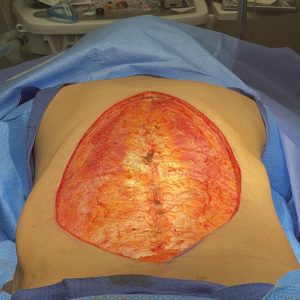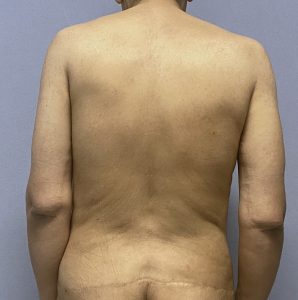Background: Rib removal surgery is becoming a better known procedure for its waist narrowing effect. Its effectiveness is based on the loss of underlying structural support of the lower ribcage for the soft tissues of the waistline. This typically involves subtotal removal of ribs #11 and #12 but may in some cases include rib #10 as well.
One of the key anatomic elements of its potential success is the skin and subcutaneous tissues must contract inward from the reduced support. This requires skin that has good elasticity and is not redundant. (aka loose skin) This is a potential issue in patients that have undergone BBL surgery, particularly more than once, where the skin has become very ‘stretchy’. A more obvious patient with skin issues is when significant weight loss has occurred. They may have a lean body but their skin is not tight and is quite mobile.
When skin contraction appears to be an issue rib removal surgery results are going to be compromised. In these cases management of the loose skin is the last anatomic barrier to an optional waistline narrowing result. A tummy tuck procedure will not be effective as it removes skin horizontally not vertically. The most effective procedure is a vertical backlift for skin removal, which acts like a corset, and also allows for rib and muscle tissue to be removed through it. This is known as a Type 3 rib removal waistline reduction procedure.
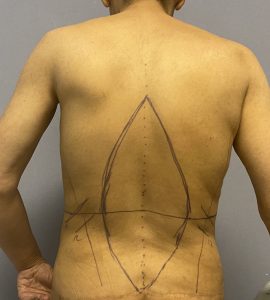
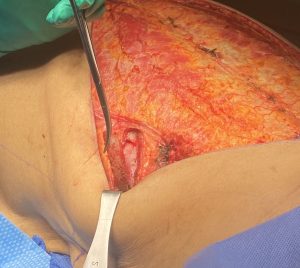
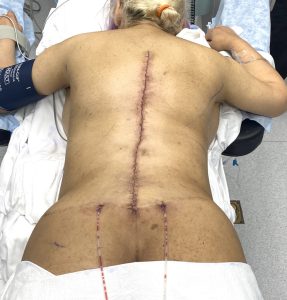
She went on to heal uneventfully and was seen at six weeks after surgery for some seroma aspiration. Her drains that were placed at surgery had been removed tens days later. Such late seroma formations are to be expected, 60cc of seroma fluid was aspirated.
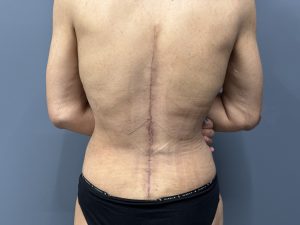
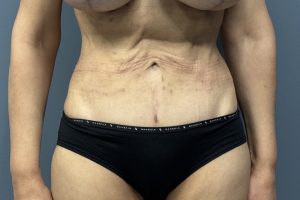
Key Points:
1) The success of rib removal surgery partially depends on the skin contracting much like is needed in liposuction.
2) Rib removal surgery for waistline narrowing loses effectiveness when loose back skin exists particularly from weight loss surgery.
3) Type 3 rib removal surgery incorporates a vertical backlift for the most complete tissue removal for waistline narrowing.
Dr. Barry Eppley
World-Renowned Plastic Surgeon



